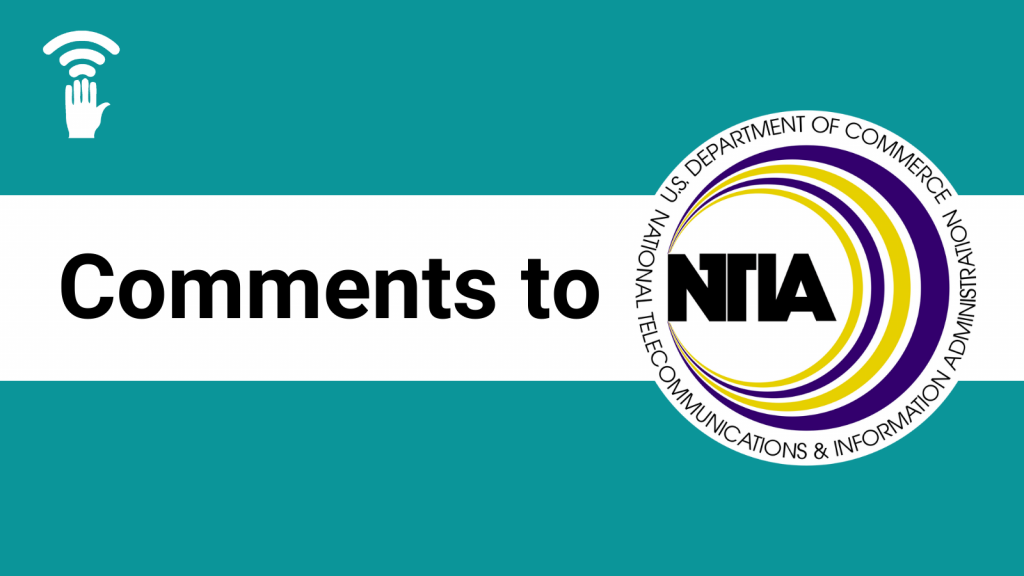
If 2021 was about writing, passing, and signing into law the Infrastructure Investment and Jobs Act (IIJA), 2022 will be about figuring out how best to spend the $1.2 trillion it allocates.
While Congress outlined some guidelines in the legislation around how the $65 billion earmarked for digital equity and broadband should be dispensed, they left some details up to the discretion of the Federal Communications Commission (FCC) and the National Telecommunications and Information Administration (NTIA), the agencies administering the funds.
NTIA will administer the bulk of the digital equity and broadband funds–over $48 billion of the $65 billion–through three programs, the Broadband Equity Access and Deployment program (BEAD), the Digital Equity Act (DEA) programs, and the Middle Mile program. To determine how best to administer these programs, they solicited comments from the public through a “Request for Comment.”
On Friday, February 4, NDIA submitted comments to NTIA, strongly recommending NTIA prioritize equity throughout all their broadband and digital equity programs.
Next, NTIA will review and take the public’s comments into account as they draft their guidance and prepare to release the “Notice of Funding Opportunity” later this spring.
Of note, for input on the Digital Equity Act implementation, NTIA only requested comments on the Digital Equity Planning Grant Program portion of the Act. NTIA indicated they will release a future request for comment on the State Digital Equity Capacity Grant Program and Digital Equity Competitive Grant Program, the other two programs included in the Act.
Below is a summary of the major themes from our comments:
- NTIA should prioritize investments in long-term, comprehensive, systemic solutions. Achieving digital equity is a long-term challenge. This requires thoughtful, systemic solutions and NTIA should prioritize investments that are holistic, comprehensive, and system-changing.
- NTIA should ensure the IIJA funds are invested in increasing the capacity of trusted community-based organizations and community anchor institutions that often already provide digital inclusion services.
- NTIA should encourage states to prioritize opportunities to advance digital equity that the DEA stipulates through its three grants and establish a digital equity office or team with a minimum of one staff member to manage the digital equity planning and implementation for the state.
- NTIA should require states to prioritize stakeholder and community engagement throughout the planning process for both the BEAD program and the digital equity planning processes by:
- Encouraging states to create and design a robust stakeholder engagement plan that elevates the voices of those who directly work with or who themselves have direct lived experience of being disconnected
- Requiring states to center the voices of covered populations (as defined by the legislation) and historically disconnected communities throughout the planning, development, and implementation of the plan
- Requiring states to intentionally identify and engage organizations trusted by covered populations and historically disconnected communities to engage in both the BEAD and DEA planning processes
- Requiring states to gather input from stakeholders through multiple mediums, including but not limited to: public hearings, surveys, focus groups, and one-on-one interviews
- Requiring states who intend to work with CBOs and CAIs to conduct stakeholder outreach and engagement for the planning process to financially compensate the CBOs and CAIs for their time, expertise, and resource allocation
- Requiring states to translate all materials developed throughout the planning process including but not limited to public notices, surveys, flyers, informational pamphlets, etc. into the state’s predominant languages
- NTIA should provide clear and bold requirements in the BEAD program and intentionally collaborate with the FCC to ensure recipients of BEAD funds do not participate in digitally discriminatory practices.
Read our full comments here. And for a refresh on the IIJA, it’s various components, and the opportunities for advancing digital equity through its programs, you can review our webinar and FAQ here.
